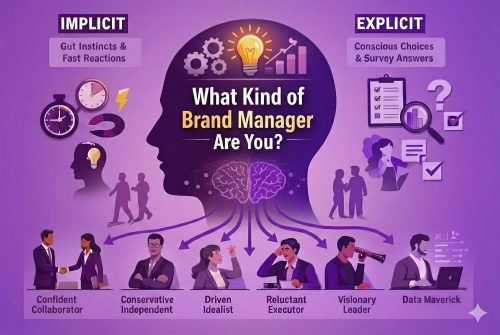What is Implicit
Gender Bias?
Our brains love to categorise. Implicit bias is a natural result of our subconscious trying to make sense of a lifetime accumulation of categories, associations, and emotions. The inevitable result is a quite large array of seemingly instinctual, non-conscious biases in the way we think about the world and other people.
Many of us will be aware of the current strides that are being made toward gender equality and how it is important to acknowledge and confront the issue of gender bias, especially in the workplace.
Gender bias can be very subtle, especially as it often operates beneath the surface of our consciousness. Implicit Association Tests (IATs) are scientifically validated tools to measure and understand these unconscious biases.
Dads4Daughters
Gender Bias Study
Split Second Research recently collaborated with Dads4Daughters campaign in a study testing 7,646 individuals from diverse backgrounds, spanning from factory workers to chief executives. The focus was to measure the presence of gender bias, particularly within the context of the workplace. This test examined adherence to traditional views of gender roles, especially concerning working life. It uncovered associations between certain professions, career routes, personal traits, and roles in the workplace and the genders they are associated with.
High Consistency
in Biases Between Genders
This study revealed several key findings. The research found a high consistency between men and women in their biases. The correlation between male and female scores was an impressive 0.93, indicating that both genders strongly adhere to gender stereotypes at the subconscious level. It is not only men who are prone, but women too.
A Difference in Gender Stereotyping
With Certain Professions
While the study demonstrated a similarity in overall gender bias between men and women, there were some intriguing differences:
Teaching Assistants
Men were found to subscribe more to stereotype teaching assistants as female than women did.


Airline Pilots and Politicians
Women were more likely than men to stereotype airline pilots and politicians as male.
Managers
Men were more likely than women to stereotype managers as male.


Decisiveness
Interestingly, women may tend to subconsciously believe that they are more decisive than men, which challenges the stereotype men typically have of women in this regard.
The Role of Implicit Association Tests
To conduct this study, Split Second Research used their Gender Bias Test, which is based on the concept of capturing fast and implicit rather than slower considered responses. The implicit test employs 24 attributes (primes) and focuses on the ‘targets’ of Male and Female. Participants are required to categorize words as either clearly male or female (e.g., girl, boy, man, woman, his, hers, etc.).
Why Measuring
Gender Bias Matters
Measuring gender bias is not about assigning blame but rather about fostering awareness and change. Recognizing these biases is the first step toward addressing them and creating more inclusive workplaces. Gender bias can affect hiring decisions, career progression, and workplace dynamics, detrimentally limiting career opportunities for women.
As individuals and organizations, we can use these insights to implement strategies for combating gender bias. These may include diversity and inclusion training, mentorship programs, and reviewing recruitment and promotion processes to ensure fairness.
In conclusion, gender bias is a complex issue that can persist even in those who believe they hold progressive views. Tools like the Implicit Association Tests are invaluable for revealing these unconscious biases. By recognizing and addressing gender bias in the workplace, we can move closer to achieving true gender equality and fostering diverse and inclusive environments where everyone has an equal opportunity to succeed.
Latest Posts
Join Our Newsletter
Subscribe to our email newsletter to keep up to date with our latest insights, news, and findings on market research, implicit testing and our occasional psychological ‘neuro-nuggets’ of wisdom.
Our blog

Inside the Mind of a Brand Manager: Find out how your instincts shape the way you work
If you’re a brand manager, you may plan carefully, but a lot of how you work day to day probably comes down to habit and

When it comes to research, is everyone biased?
Well yes, as a matter of fact, everyone is There’s no shame in it. We’re all biased in some way or another, although understandably we’d

Market Research with Human and Synthetic Respondents
The idea of synthetic respondents in market research arises from a desire to simulate human responses using artificial intelligence. Instead of collecting data from real

